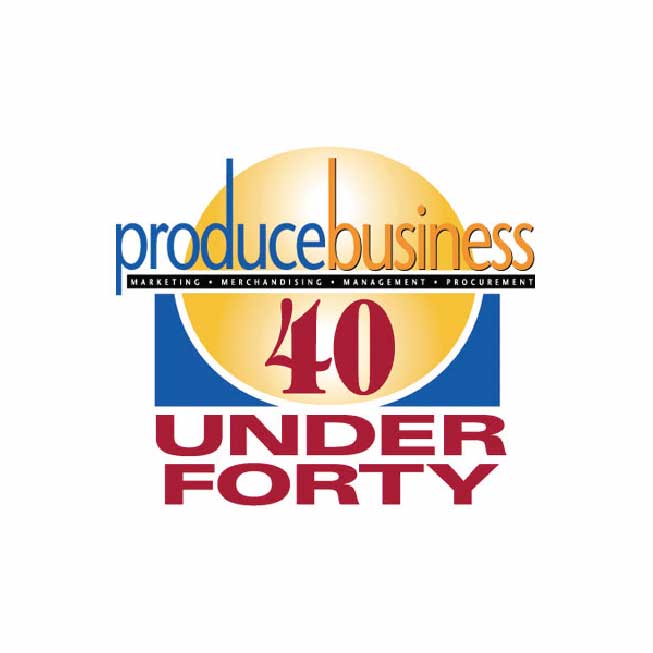Celebrating 35 Years — Vanguards Who Made a Difference: BOB BACKOVICH
September 27, 2021 | 4 min to read
Over the course of the year, we pay tribute to 35 living Vanguards and 12 departed heroes. This month’s featured Vanguard is Bob Backovich of Safeway Stores.
Originally printed in the November 2020 issue of Produce Business.

(1931-2008)
Vice President of Produce and Floral
Safeway Stores
Bob Backovich was big in stature, literally and figuratively, memorialized when he passed away in 2008 at the age of 76, as a towering presence in moving the industry forward. “Bob was a pioneer in the industry during the ‘Produce Renaissance Years’ of sweeping, transformational change,” says Don Harris, an industry retail veteran himself, who says he was very fortunate to have Backovich as his mentor at Safeway Stores. “Bob was among the group of industry icons in the 80’s and 90’s who laid the foundation for the expansion and growth of the industry and its effect on consumption and health benefits for the consumer.”
Backovich’s career at Safeway Stores spanned 40 years, where he worked his way up from a produce clerk bagging groceries and stocking shelves, to vice president of produce and floral, before retiring in 1993. “He took Safeway, a western retailer, and turned it into a national force using produce to drive the process,” says Harris.
That was a real step in vaulting Safeway into the forefront to become the largest supermarket chain in the U.S., before Walmart’s rise. Under his helm, Safeway’s produce sales doubled to 11-12% of total store sales, whereas most chains in those days were doing 5-6%, according to Harris.
He was a progressive, early proponent of expanding the produce department into a destination mecca, and this was a real transformation for the company to target and spotlight the produce department, says Harris, noting the importance of this exposure in increasing consumer awareness of produce. “Other retailers started doing the same to grow the industry. It was an exciting time to be there.”
Backovich directed the adoption and execution of impactful merchandising programs, such as the “orchard bin” and “marketplace format.” He cemented strong working and promotional relationships with key innovative growers/shippers, also directing the procurement function, keenly committed to bolstering burgeoning varieties from around the world.
“Bob was constantly looking for new things, and didn’t let the cynics stop him. He was always driving innovation,” says Harris, noting, ‘’He got criticized when he decided to put kiwis in all the stores when Frieda’s was bringing them in. But he believed in the product and saw the potential.” Selling juices in produce cases at Safeway also had many skeptics too, he adds.
Similarly, Backovich was on board early on with the packaged salad phenomenon that took off with Salinas, CA-based Fresh Express. Safeway started flying in Florette brand packaged salads from France in late 1988/early 1989. “We flew them over on Air France (a few shipments came on the Concorde) twice a week, and we sold them in our San Francisco stores at first, and then in stores in Washington D.C. They did well enough that we began to work with Red Coach Farms (which became Fresh Express) to produce them in California,” Harris explains. “We ended up doing initial work on what became a destination category in produce, and that was something that Bob started within the company,” he says.
Backovich also was an innovator in floral in the 80’s, when floral was kind of an afterthought under the umbrella of produce, where basically the only things being pushed were poinsettias in December and other holiday plants. Backovich was one of the first to separate floral from produce as a dedicated stand-alone hub, instituting “bucket shops” filled with colorful, fresh-cut flowers, inspired by the vendors selling fresh-cut flowers in black plastic buckets in the late 1970’s on the street corners in San Francisco.
His development and storewide rollout of the Safeway Nutritional Advisory Program for Produce in 1986/87 not only emphasized variety, but also nutrition information, resonating from his role as Chairman of PMA’s Nutritional Task Force in 1981-1983. Bob Carey [see his Vanguard article in the October 2020 issue] , who headed PMA from 1958 until his retirement 38 years later, had told PRODUCE BUSINESS that Bob Backovich was among the most influential board members taking action to help advance the nutrition movement. It was a real turning point in the industry’s growth, according to Harris.
Always concerned with the advancement of the whole industry, Backovich was very active in the Produce Marketing Association, serving on the retail and main board, advancing through the chairmanships, and ultimately becoming PMA’s chairman in 1987. He understood what was good for the industry was good for individual companies.
When Carey came to ask Bob Backovich to join the PMA board as the first major national retail chain, it was a significant thing for Safeway to allow that at the time, remembers Harris. It was just not heard of, he says, noting that Safeway was tight-lipped and held information close to the vest. “What we were doing was our business, and we didn’t need to share it with the competition. That was a prevailing rationale at retail, but PMA had the people behind it to break down that rationale. There was this feeling of a big wave, and everyone was needed to move it. Backovich lived by that mantra.”
Bryan Silbermann [see his Vanguard article in the October 2020 issue], whose 30 years at PMA included 20 years as president, gave tribute to Backovich at the time of his passing, describing him as one of the warmest people one could imagine. “He was an instinctive leader who spoke his mind and listened with care. He was a pioneer in marketing the nutritional benefits of produce and strongly believed in the power of a well-trained produce department workforce. Our community has lost one of its truly great leaders.”

